MercoPress. South Atlantic News Agency
Tag: iceberg
-
Tuesday, December 5th 2023 - 10:40 UTC
RRS Sir David Attenborough meets mega iceberg A23a drifting towards South Georgia
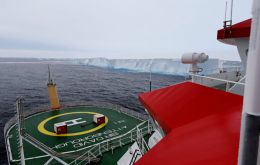
Scientists aboard the Falklands flagged RRS Sir David Attenborough collected samples of seawater around the A23a mega iceberg, the largest iceberg in the world. New video footage shows the enormous iceberg, some 3,900km2 and 400m tall, twice the size of Greater London stretching out into the distance beyond the research vessel.
-
Wednesday, November 29th 2023 - 14:12 UTC
Using a new AI tool to track the life cycle of icebergs in Antarctica
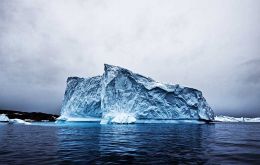
Researchers are using a new AI tool to detect icebergs in the Southern Ocean. This is the first step towards scientists being able to track the complete life cycle of most icebergs across Antarctica from satellite data. The study published in the journal Remote Sensing of the Environment points out a report from the British Antarctic Survey.
-
Monday, August 21st 2023 - 10:43 UTC
World scientists call for more research on the Southern Ocean and climate change

Three hundred scientists from 25 nations have met this week in the Antarctic gateway city of Hobart, Australia, for the first-ever international conference of the Southern Ocean Observing System, SOOS.
-
Monday, August 7th 2023 - 10:49 UTC
Why Antarctic winter ice, the size of Greenland, is missing?

Winter sea ice in the Antarctic is at a historic low, and scientists are working to understand why an area of ice the size of Greenland is missing. Scientists from British Antarctic Survey have been active in the media offering commentary on this extreme event.
-
Thursday, January 26th 2023 - 09:51 UTC
Argentina keeping an eye on Antarctica's new iceberg
![“It is necessary to monitor when the icebreaker Irizar passes by that [the ice floe] is at a prudent distance,” Marinsek explained](/data/cache/noticias/92677/260x165/iceberg2.jpg)
The Argentine Antarctic Institute (IAA) warned that the iceberg that calved off the Brunt Ice Shelf into the Wedell Sea is such a large structure that any vessel coming its way would have to take evasive action. Hence, it is being monitored to make sure it does not affect the icebreaker ARA Almirante Irízar's route from Ushuaia to the Argentine bases in the region.
-
Saturday, January 22nd 2022 - 10:56 UTC
The drifting giant A68 iceberg released billions of tons of fresh water in South Georgia ecosystem
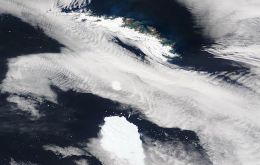
Scientists monitoring the giant A68a iceberg from space reveal that a huge amount of freshwater was released as it melted around the sub-Antarctic island of South Georgia. An estimated 152 billion tons of freshwater – equivalent to 20 x Loch Ness or 61 million Olympic sized swimming pools, entered the seas around the sub-Antarctic island of South Georgia when A68a melted over three months in 2020/2021, according to a new study published this month by the British Antarctic Survey.
-
Thursday, May 20th 2021 - 07:11 UTC
Giant iceberg breaks away from the Brunt Ice Shelf in Antarctica
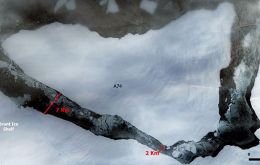
A giant iceberg, larger than the size of most European cities, has broken away from Antarctica, near a British research station, the British Antarctic Survey said on Friday.
-
Saturday, December 19th 2020 - 09:50 UTC
A68a iceberg heading for South Georgia shifts direction and loses a chunk of mass
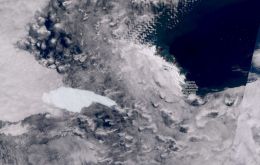
Strong currents have taken hold of a massive Antarctic iceberg that is on a collision course towards South Georgia Island, causing it to shift direction and lose a major chunk of mass, a scientist tracking its journey said on Friday.
-
Monday, December 7th 2020 - 09:20 UTC
World's largest iceberg approaching South Georgia: concerns it could get stuck in shallow waters
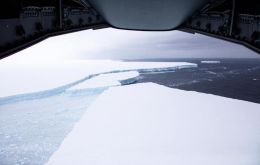
The world’s largest iceberg has been captured on camera drifting through the Southern Antarctic Front near the overseas British territory of South Georgia. British Forces South Atlantic Islands (BFSAI) used high-speed digital cameras attached to a military transport aircraft to capture rare images of the iceberg as it travelled towards the island.
-
Thursday, November 5th 2020 - 09:04 UTC
Jumbo iceberg, size of Somerset County, heading for South Georgia

An iceberg is heading towards the sub-Antarctic island of South Georgia. A68a – the size of the UK county of Somerset (4,200 sq km) broke off from the Larsen C ice shelf in 2017 and has been drifting north ever since. If it becomes grounded near the island, it could cause disruption to the local wildlife that forage in the food-rich ocean.
